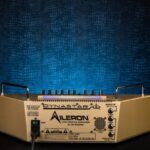In an era dominated by technology, the interplay between software and hardware development drives innovation across industries, from consumer electronics to artificial intelligence. For beginners, understanding the fundamentals of Software and Hardware Development is the first step toward creating functional, efficient, and innovative solutions. This guide breaks down the core concepts, key differences, collaborative workflows, and practical steps to kickstart your journey in this dynamic field.
1. Understanding Software and Hardware Development: Core Concepts
What is Software Development?
Software development involves creating, testing, and maintaining applications, programs, or scripts that run on digital devices. Unlike physical hardware, software is intangible—composed of code that dictates how a device operates.
- Key Components:
- Programming Languages: Python, Java, C++, JavaScript, and Swift are popular choices for different use cases (e.g., Python for data science, JavaScript for web development).
- Development Tools: Integrated Development Environments (IDEs) like Visual Studio Code, PyCharm, or Xcode streamline coding, debugging, and testing.
- Software Types: Applications range from desktop/mobile apps (e.g., Instagram) to system software (e.g., operating systems like Windows or Linux) and embedded software (e.g., firmware in smart devices).
What is Hardware Development?
Hardware development focuses on designing, prototyping, and manufacturing physical electronic components and systems. This includes everything from simple circuit boards to complex devices like smartphones or IoT sensors.
- Key Components:
- Electronic Parts: Resistors, capacitors, microprocessors, and integrated circuits (ICs) form the building blocks of hardware.
- Design Tools: Software like Altium Designer, KiCad, or Eagle aids in PCB (Printed Circuit Board) layout and schematic capture.
- Prototyping: Tools such as Arduino, Raspberry Pi, and breadboards allow beginners to test hardware designs without advanced manufacturing.
Why They Complement Each Other:
Modern technology thrives on the synergy between software and hardware. For example:
Modern technology thrives on the synergy between software and hardware. For example:
- Embedded Systems: A smart thermostat uses hardware (sensors, microcontrollers) to collect data and software (algorithms) to regulate temperature.
- IoT Devices: Hardware like sensors captures data, while software (cloud platforms) analyzes and acts on it in real time.
3. Collaborative Workflows in Software and Hardware Development
Successful projects often require seamless collaboration between software and hardware teams. Here’s how they intersect:
1. Requirement Gathering
- Hardware Teams: Define physical constraints (size, power consumption, environmental factors).
- Software Teams: Identify functional requirements (user interfaces, data processing needs).
2. Design and Prototyping
- Hardware First: Design PCBs, select components, and build prototypes (e.g., using Arduino for proof of concept).
- Software Integration: Develop firmware or apps to interface with hardware (e.g., writing code to read sensor data).
3. Testing and Optimization
- Joint Testing: Debug issues like signal interference (hardware) or latency (software).
- Iteration: Refine both aspects—e.g., optimizing PCB layout to reduce EMI (electromagnetic interference) while improving software algorithms for faster processing.
4. Tools for Collaborative Development
- Version Control: Git (for software) and Hardware Version Control (HVC) tools like Upverter (for PCB designs) ensure team alignment.
- Simulation Software: MATLAB or Simulink for modeling combined software-hardware systems before physical prototyping.
4. Getting Started: Steps for Beginners
Step 1: Learn the Basics
- Software Development:
- Start with beginner-friendly languages like Python or JavaScript.
- Explore free resources: Codecademy, freeCodeCamp, or Coursera (e.g., “Python for Everybody”).
- Hardware Development:
- Study basic electronics (Ohm’s Law, circuit diagrams) using platforms like Khan Academy.
- Experiment with Arduino or Raspberry Pi kits to build simple projects (e.g., a light-sensitive sensor).
Step 2: Build a Cross-Disciplinary Project
- Example Project: Create a smart plant monitor.
- Hardware: Use a Raspberry Pi, soil moisture sensor, and LED indicator.
- Software: Write Python code to read sensor data, send alerts via email, and display metrics on a web interface.
- Tools Needed:
- Hardware: Breadboard, jumper wires, Raspberry Pi Zero.
- Software: Python, Flask (for the web interface), and Git for version control.
Step 3: Dive Deeper into Specializations
- Software Pathways:
- Frontend/Backend Development, Mobile Apps, or Data Science.
- Hardware Pathways:
- PCB Design, Robotics, or IoT Hardware.
- Hybrid Pathways:
- Embedded Systems, Firmware Development, or Full-Stack Hardware (designing both PCB and software).
Step 4: Engage with Communities
- Online Forums: Stack Overflow (software), Arduino Forum (hardware), or Reddit’s r/electronics.
- Open Source Projects: Contribute to projects on GitHub (e.g., open-source firmware or PCB designs).
- Maker Fairs and Workshops: Attend local events to learn from experienced developers and showcase your projects.
5. Challenges and Tips for Success
Common Challenges:
- Complexity of Integration: Ensuring software and hardware communicate flawlessly (e.g., via USB, Bluetooth, or Wi-Fi).
- Resource Constraints: Balancing cost, time, and functionality, especially for beginners.
- Rapid Technological Changes: Staying updated with trends like AI, edge computing, or advanced PCB materials.
Tips for Beginners:
- Start Small: Begin with simple projects (e.g., a LED blinker with Arduino) before tackling complex systems.
- Learn from Mistakes: Debugging is a crucial skill—embrace errors as learning opportunities.
- Stay Curious: Follow tech blogs (e.g., Hackaday, The Verge) and podcasts (e.g., “Software Engineering Daily”) to stay inspired.
6. Future Trends in Software and Hardware Development
- AI and Machine Learning Integration: Smart hardware (e.g., autonomous vehicles) will rely on AI algorithms for real-time decision-making.
- IoT and Edge Computing: More devices will process data locally (on-edge hardware) to reduce latency, requiring tighter software-hardware integration.
- Open Source Ecosystems: Platforms like Arduino and Raspberry Pi will continue to democratize access to development tools, fostering innovation.
- Sustainability: Eco-friendly materials in hardware (e.g., recycled PCBs) and energy-efficient software algorithms will gain prominence.
Conclusion
Software and Hardware Development are two sides of the same coin, each indispensable to creating cutting-edge technology. As a beginner, embracing both disciplines—even at a foundational level—will open doors to diverse career paths, from robotics and IoT to full-stack engineering. Start with small projects, leverage free resources, and join supportive communities. With patience and practice, you’ll master the art of designing systems that blend the digital and physical worlds seamlessly.
- A Beginner's Guide to Software and Hardware Development: From Basic Concepts to Collaborative Development
- This guide breaks down the core concepts, key differences, collaborative workflows, and practical steps to kickstart your journey in this dynamic field.
- Hardware Development
Related posts:
 The Power Shift: How AI Democratization is Redefining Access and Opportunity
The Power Shift: How AI Democratization is Redefining Access and Opportunity
 CIF Meaning in Shipping Explained: Cost, Insurance, and Freight
CIF Meaning in Shipping Explained: Cost, Insurance, and Freight
 Why Paystub Generator Free Tools Are Gaining Popularity in 2025
Why Paystub Generator Free Tools Are Gaining Popularity in 2025
 QuickBooks Payroll Error 17337: Solutions You Need Now QuickBooks
QuickBooks Payroll Error 17337: Solutions You Need Now QuickBooks
 From Livestreams to Global Clips: How QQAI.ai Is Turning AI Video Editing into a Worldwide Opportunity
From Livestreams to Global Clips: How QQAI.ai Is Turning AI Video Editing into a Worldwide Opportunity
 Call Center Monitoring & Performance Management: 11 Best Practices
Call Center Monitoring & Performance Management: 11 Best Practices
 Dynastar Electronics: Leading the Way in Guitar Amplifier Manufacturing
Dynastar Electronics: Leading the Way in Guitar Amplifier Manufacturing
 Time Champ: Streamlining Workforce Productivity with Precision
Time Champ: Streamlining Workforce Productivity with Precision







